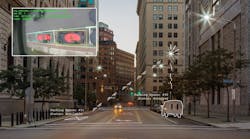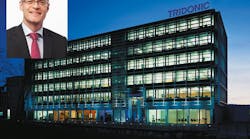The Lighting Research Center (LRC) at Rensselaer Polytechnic Institute and Pennsylvania (Penn) State University have published research that studies roadway lighting and night-time safety in rural and urban intersections. Quality lighting, such as the uniform coverage that LED-based luminaires are capable of, can result in a 12% lower night-to-day crash ratio in urban intersections, although that advantage is tied to regularly spaced lighting that drivers experience well before an intersection.
The report entitled "To illuminate or not to illuminate: Roadway lighting as it affects traffic safety at intersections" was published in the Accident Analysis and Prevention scientific journal. While it may seem like common sense to assume lighting can improve safety, the research team says that the study is the first to separate the benefits of lighting, including vehicle headlights, from other factors such as traffic signals, medians, and intersection design.
"While the finding that safety benefits from roadway lighting are highly related to the visibility improvements lighting provides is not novel nor unexpected, evidence for this direct link has been scarce in the literature," said LRC director and professor Mark Rea. "Our models provide a tool that transportation agencies can begin using now to not only allocate lighting more efficiently, but to design lighting more effectively."
The two-pronged research used quantitative models developed by the researchers and actual accident and intersection data supplied by the Minnesota Department of Transportation covering rural and urban intersections. The parallel analysis showed converged results and produced a transfer function that can be used by other traffic agencies to predict the impact of lighting projects.
The research team reported that roadway lighting has little impact on safety at rural intersections because typically such intersections only have lighting on one or two poles located near the actual intersection. High auto speeds on rural roads mean that more lighting wouldn't allow drivers to "see hazards when those hazards might still be hundreds of feet from the junction."
In urban intersections, conversely, speeds are slower and there is lighting on more poles farther away from the actual intersection. That lighting yields the aforementioned 12% reduction in night-time accidents relative to day-time accidents.
The paper authors include Mark Rea, LRC senior research scientist John Bullough, and Thomas Larson, faculty researchers at Penn State's Pennsylvania Transportation Institute.

![An installer uses a cell phone to configure a connected lighting system in a Next Generation Lighting Systems (NGLS) living lab. [Photo credit: Image courtesy of Pacific Northwest National Laboratory (PNNL) and NGLS.] An installer uses a cell phone to configure a connected lighting system in a Next Generation Lighting Systems (NGLS) living lab. [Photo credit: Image courtesy of Pacific Northwest National Laboratory (PNNL) and NGLS.]](https://img.ledsmagazine.com/files/base/ebm/leds/image/2020/06/NGLS_Photo_2.5ed693de53fa2.png?auto=format,compress&fit=crop&q=45&h=139&height=139&w=250&width=250)


